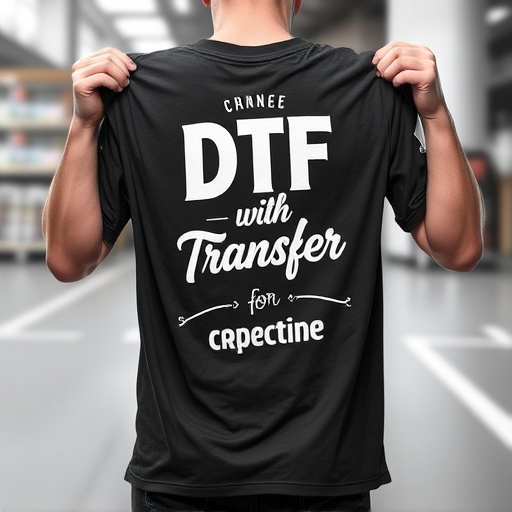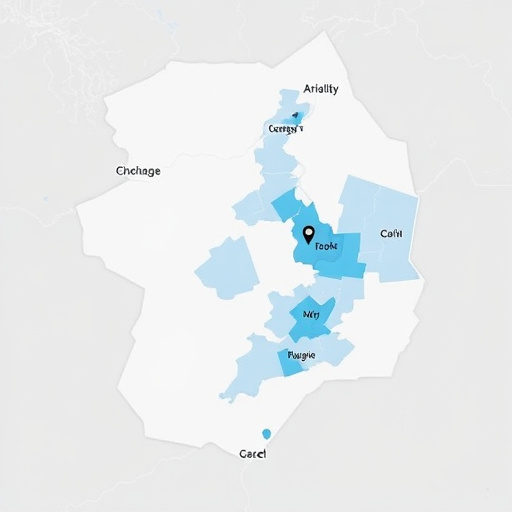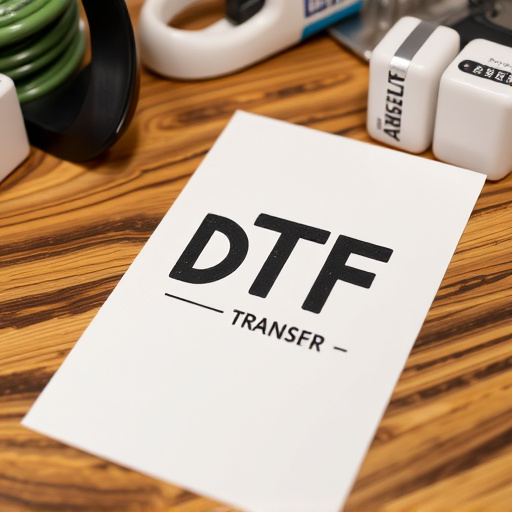Direct-to-Film (DTF) transfers offer a versatile method for applying vintage or special effect films to various surfaces with remarkable aesthetic appeal. The ideal temperature range for DTF transfers is 130°F to 150°F (54°C to 66°C), balancing film fusion, detail preservation, and color vibrancy. Proper preheating (50°C to 70°C) ensures strong adhesion and consistent quality. Avoiding common mistakes like overheating and inconsistent heat distribution is crucial for high-quality DTF prints. Meticulous temperature control, equipment maintenance, and adherence to manufacturer guidelines ensure vibrant, indelible results in both artistic and commercial projects.
“Uncover the secrets to achieving flawless DTF transfers with this comprehensive guide. DTF printing offers a unique way to apply film transfers, but understanding its ideal temperature range is key to success. We explore the science behind DTF and how temperature settings impact results. From preheating techniques to common mistakes to avoid, this article equips you with insights for consistent quality. Master the art of DTF Printing by optimizing temperature settings and elevate your transfer game.”
- Understanding DTF Transfer and Its Unique Properties
- Ideal Temperature Range for Optimal DTF Transfer Results
- Factors Influencing Temperature Settings in DTF Printing
- Preheating Considerations for Enhanced Adhesion and Quality
- Common Mistakes to Avoid When Setting Temperature for DTF Prints
- Tips for Achieving Consistent Temperatures During the Transfer Process
Understanding DTF Transfer and Its Unique Properties

The Direct-to-Film (DTF) transfer process is a unique and modern method for applying vintage or special effect films to various surfaces, offering a distinct aesthetic in the world of printing and design. This innovative technique involves transferring the image directly onto a film stock, creating a versatile material that can be used for numerous creative applications. DTF transfers possess several advantageous properties; they are highly customizable, allowing for precise color reproduction and intricate detail, making them ideal for both artistic endeavors and commercial projects.
With DTF Printing, you can achieve remarkable results, from creating vintage-inspired signs to enhancing murals or even personalizing merchandise. The flexibility of this process enables designers and artists to experiment with various film types, including transparent, colored, or even specialty effects films, adding depth and character to their creations. Understanding the unique properties of DTF transfers is key to unlocking their full potential, ensuring the best outcomes for your creative visions.
Ideal Temperature Range for Optimal DTF Transfer Results

The ideal temperature range for achieving optimal results in Direct-to-Film (DTF) transfers is a crucial aspect to consider when printing films. This specific temperature setting plays a pivotal role in ensuring the longevity and clarity of DTF prints. Typically, the recommended range falls between 130°F to 150°F (or 54°C to 66°C). This window allows for the perfect balance between fusing the film onto the substrate while preserving the intricate details and vibrant colors.
Exceeding or falling short of this temperature range can lead to subpar results, including poor adhesion, fading, or even damage to the film itself. Therefore, maintaining a consistent and controlled environment during the DTF transfer process is essential for achieving professional-grade prints.
Factors Influencing Temperature Settings in DTF Printing

When setting the temperature for a DTF (Direct-To-Film) transfer, several factors come into play. The first is the type of film being used; different films have varying melting points and adhesion properties, requiring specific heat to ensure a successful print. Additionally, the desired outcome influences temperature choices—a higher temperature yields bolder, more vibrant prints but increases the risk of warping or melting the substrate.
The surface preparation of the transfer destination is another critical aspect. Rougher surfaces tend to require lower temperatures for optimal adhesion, while smoother materials might demand slightly higher heat to achieve a secure bond. Environmental conditions, such as humidity and air flow, also play a role in DTF printing. High humidity can impact the melting process, necessitating adjustments to maintain consistent print quality.
Preheating Considerations for Enhanced Adhesion and Quality

When preparing to apply a DTF Transfer or DTF Print, preheating is a crucial step that should not be overlooked. It ensures optimal adhesion and enhances the overall quality of the final product. The recommended temperature for preheating typically ranges between 50°C to 70°C (122°F to 158°F), allowing the substrate and transfer material to reach a consistent bond. This process is particularly essential when working with delicate materials, as it promotes strong adherence without causing damage or warping.
Adequate preheating creates a stable environment for DTF Printing, ensuring that the ink and carrier sheet fuse seamlessly with the target surface. It’s important to maintain this temperature range throughout the application process, giving the transfer time to set properly. This attention to detail can significantly impact the longevity and vibrancy of DTF prints, making it a key consideration for any professional or enthusiast looking to achieve exceptional results.
Common Mistakes to Avoid When Setting Temperature for DTF Prints

When setting temperature for DTF (Direct to Film) transfers, it’s crucial to avoid common pitfalls that can compromise the quality of your prints. One major mistake is overheating, which can cause the film to melt or become distorted, resulting in blurry images and uneven color. Always stick to the recommended temperature range provided by the manufacturer for optimal results. Exceeding these limits can lead to permanent damage to both the film and your printing equipment.
Another error is setting an inconsistent temperature throughout the print process. DTF transfers require precise control over heat exposure, especially during the critical initial pressing phase. Using a single, high temperature across the entire surface of the film may burn certain areas while leaving others under-pressed. Ensure your heating element or press maintains a uniform heat distribution to avoid these issues and achieve sharp, vibrant DTF prints.
Tips for Achieving Consistent Temperatures During the Transfer Process

Achieving consistent temperatures throughout the DTF transfer process is paramount for producing high-quality DTF prints. Start by ensuring your work area is regulated; use a temperature-controlled environment to minimize fluctuations. Use precision thermometers to monitor the heat during application, following manufacturer guidelines closely. Preheating your press or iron to the recommended setting before each use can help maintain accuracy.
Consider using heating mats or platforms beneath your work surface for more even distribution. Regularly cleaning and calibrating your equipment also plays a vital role in maintaining temperature consistency. This meticulous approach guarantees that every DTF transfer receives the exact heat required, resulting in vibrant, indelible prints.














